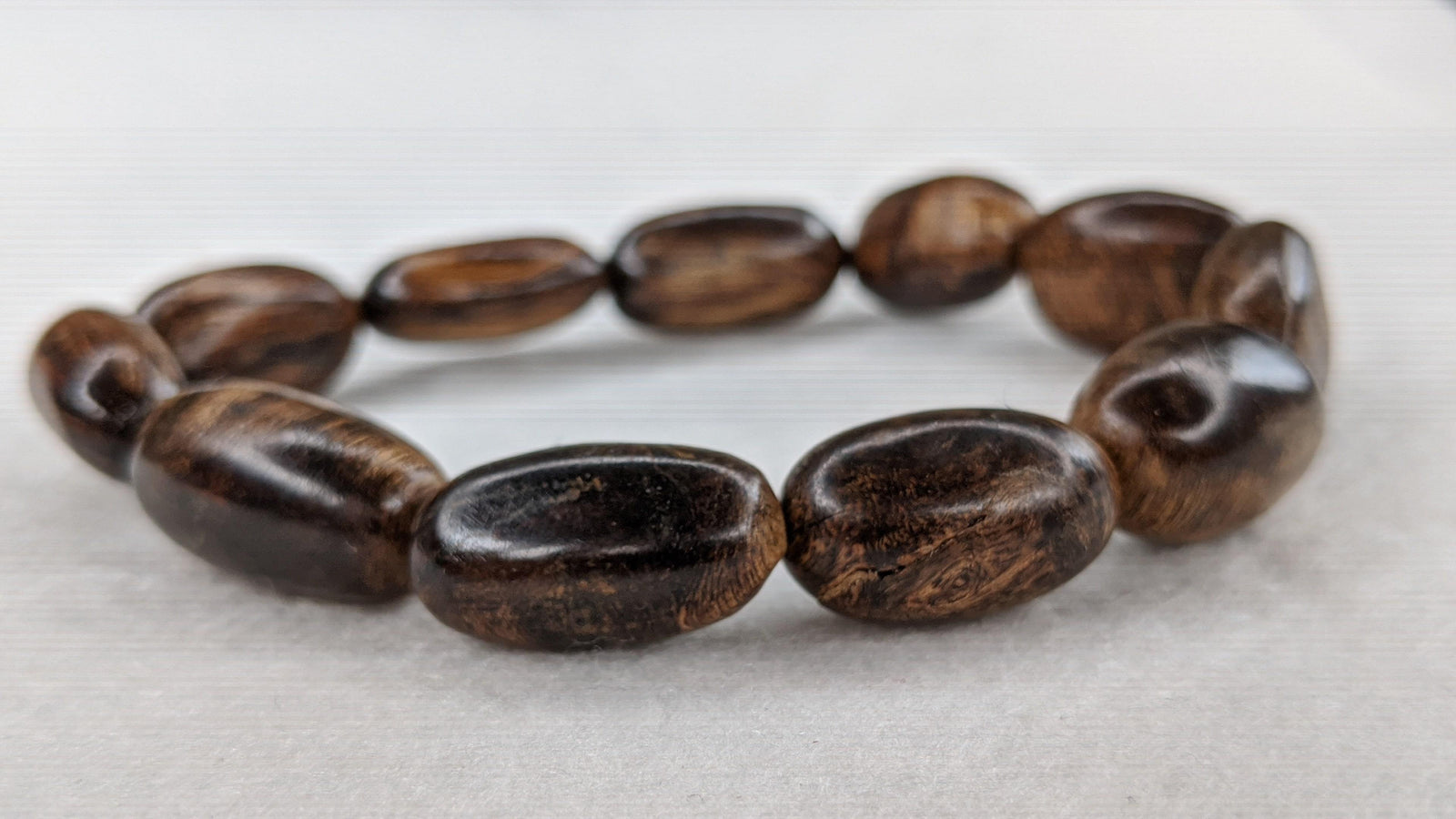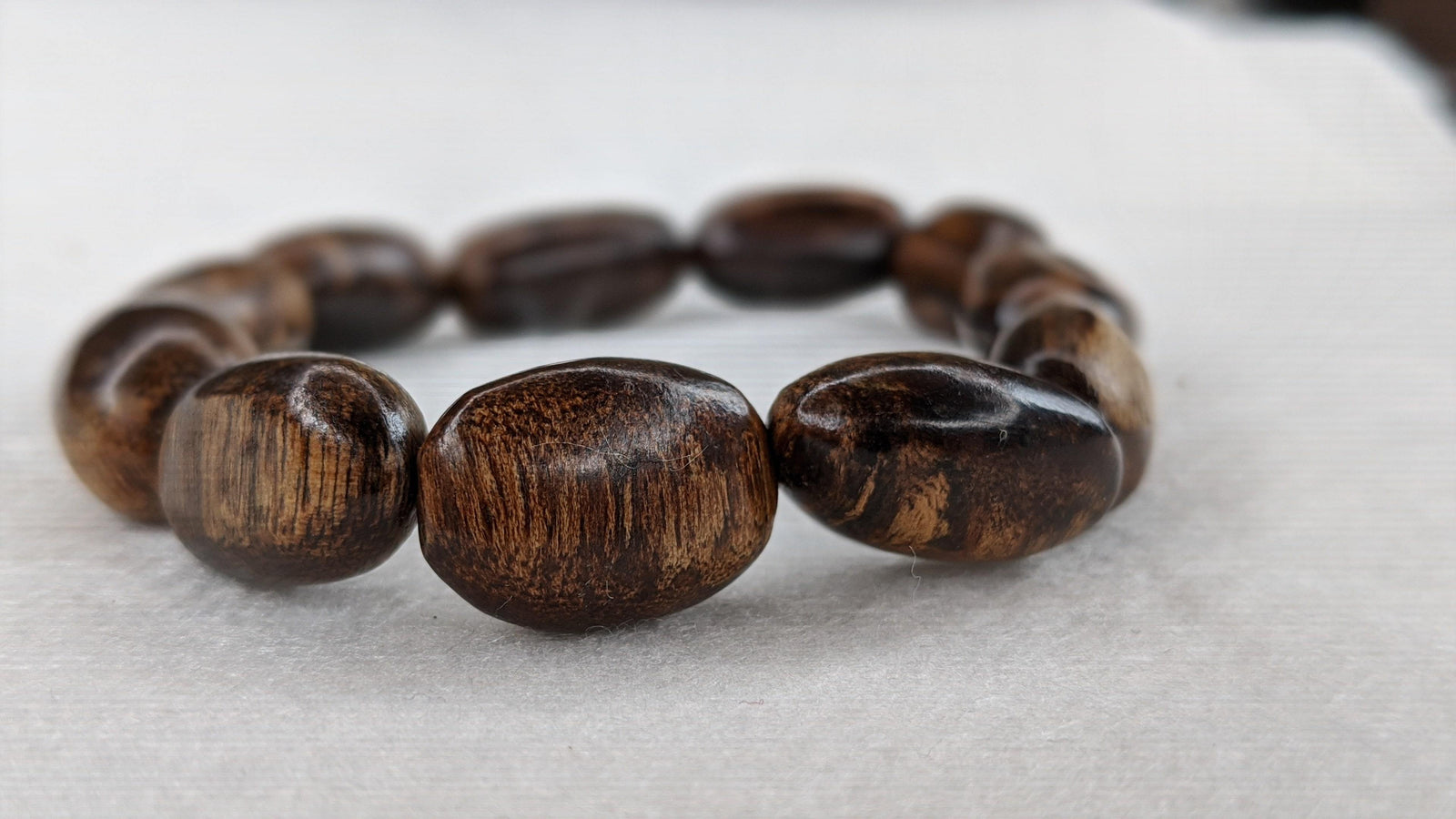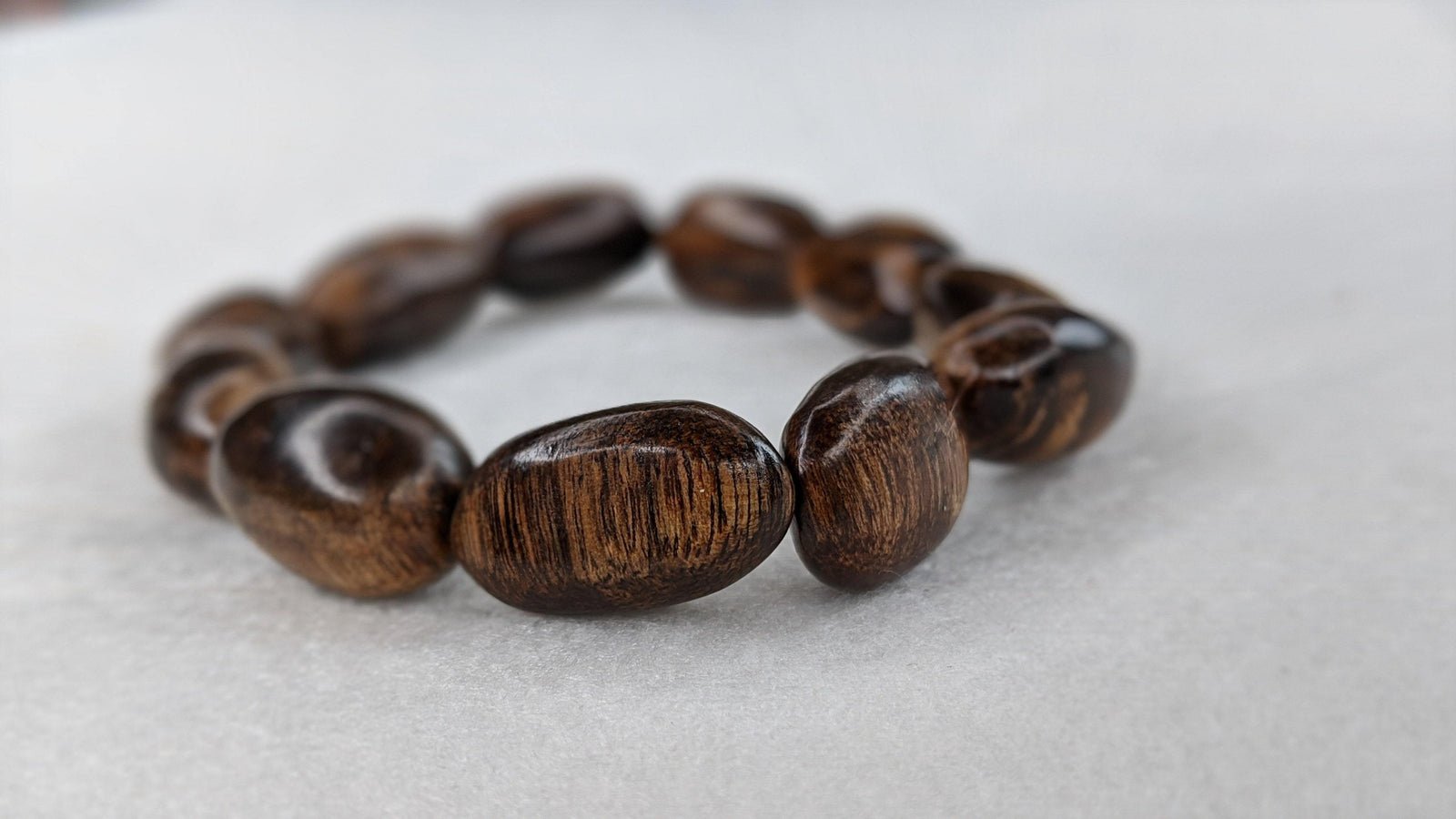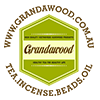



















The rarer than rare: Sinking Wild agarwood bracelet
Only one available
Dear friend
If you had requested notification when a sinking bracelet came up before,
Then
I would have good news for you
A rare find from a local man
A local man, named Khan had discovered some rare and small agarwood pieces from Borneo Island. The smallest piece is around the size of the pinky (little or baby finger). And the length of the largest piece is from the tip of the middle finger to the wrist.
All of these pieces are rock-solid hard, and they are hard enough that when Khan dropped them into the water, they sank.

What does it mean?
People believe that when agarwood sinks, it is classified as a high-grade.
This belief is based on physical properties. (there are some exceptions, some agarwood pieces float and they are good stuff too but let's discuss in a different topic)
The majority of agarwood is from the Aquilaria tree. In this nature, healthy Aquilaria wood floats. The wood colour is white, and they are quite soft.
However, something changes when the tree is under attack.
The battle is on. The tree secretes resin (known as agarwood) to protect and heal itself. This process repeated and overtime when the Aquilaria tree secreted enough resin, its hardness increase.
Some trees no longer secrete resin. They stop creating agarwood because it is a peaceful time. No attack, the battle stops
However, in some circumstances, the war is still going because the attackers do not stop. These attackers could be ants, fungi, boring insects, and they are always hungry.
These attackers could deform the tree creating a unique look.
To fight back, the Aquilaria sends more of its "warriors" (agarwood) to fight. It means more resin created during this battle.
During this battle, the Aquilaria wood transformed into agarwood. And when there is enough resin, the wood is denser than the water, it sinks.
What makes "sinking agarwood"?
Usually, Agarwood floats (López-Sampson, A., Page, T, 2018)
"The first Japanese written record of agarwood was also reported in the Nihongi when, in 595 C.E., a large piece of agarwood drifted ashore on the island of Awaji. The islanders noticed in wonder that it produced a strong fragrance when used as firewood, and later presented an unburnt piece to Empress Suiko (Aston 1896)"
But what makes it "sunken"?
I am not a scientist, but I completed the middle school program. In middle school, there was a lesson about water density.
Water Density is the weight of the water per its volume. And it is approximately 1g/ml.
But that what the textbook said, how about we verify it.
I used a pipet to get 1ml of water.

This is what a 1ml of water look like
I weighted an empty glass bottle, and it was 3g.

Now I weighted the one contained water: 4g

An empty glass bottle weighted 3g.
A glass bottle contained 1ml of water weighted 4g.
It means when you take 1ml of water and put it on the scale; it weighs 1g.
And this is the magic number to determine if it sinks or floats when contacting with water.
If an object is denser than water, it will sink.
If an object is lesser than water, it will float.
Let's see some real-life application:
You can use this concept to explain why agarwood oil floats.
1ml of essential Oud Oil is around 0.85g.
0.85h is less than 1g
So it floats
Simple, heh?
The challenge
I wished I had a tool that can "liquidity" agarwood pieces or logs then weighed in on scale to find out they sink or float.
Unfortunately, without professional tools, I have to get it from the expert.
Dr Kang in his book Prospects and Utilization of tropical Plantation Trees, (page 188, and 189) mentioned
In dry condition, the density of a healthy Aquilaria wood is around 0.27 g/ml.
When it is infected, this number ranged from 0.3g to 0.5g/ml.
In some rare cases it reached as high as 0.8g/ml but it still less than 1
So, most of the time, agarwood floats.
Rarer than the rare
But not in this case, when the local man Khan put these pieces of agarwood underwater, it sank.
I don't know its exact density, from what Khan did, its density is larger than water.
If there is enough material, we will make either a bracelet or mala.
However, again with a few pieces, we needed to be creative.
Instead of round beads, we made eclipse shape. And we only have 11 of these beads.
Run your finger through this bracelet and feel the grains (agarwood patterns)
Usually, people like smooth and shiny wood when it comes to jewellery. But these beads are unusual because they are rare.
Picture this in your mind,
when you touched these beads, you will feel some lump just like you slide your finger across a hair comb
And we want you to experience this feeling.
Because
If we polish them hard to achieve a high degree of shiny and smooth, the grain will be "smoothed" up. It will make you feel like an ordinary wood piece instead of this special agarwood.
The fault of this bead
As there is not much material to make, we can only work with what we have.
There was a small crack of the wood, and we would have made it from a different wood if we had had any.
So here is what the cracked bead looks like. It was not a human error or mistake during the creation. It is a nature crack from the material.

Usually, the price for a genuine sinking wildwood bracelet or mala is around $10,000 USD ($16,000 AUD) because it is really one of a kind.
We only have a few pieces of these sinking wood, just enough to create
One bracelet. You won't find in anywhere else.
That contains only 11 beads of these sinking agarwood beads for you at a special price $5250 AUD.
Please avoid contacting water.
Warning
Please DO NOT submerge these beads underwater. If you do, these beads will sink but
The fact is: Water and wood do not mix.
Water will get into the wood and expand it. Your beads will crack.
This bracelet is made from agarwood only. There was no coating, no wax, no paint or other protecting layer. So when it contacts water, it would expand. Please keep that in mind.
These beads are made from sinking agarwood. But they are now completed in bead form.
If you still want to test this bracelet sinks or floats, you can. Surely it will sink, but your hear will fall too when you see the damage after that
Features
Wild Agarwood from Borneo Region
Agarwood Density: denser than water,
Material: sinkage agarwood
Weight: 15g
Number of Beads: 11 beads




















